Theddingworth All Saints
This small village lies on the main road between Lutterworth and Market Harborough on the border with Northamptonshire. It straddles hills looking over the Welland Valley. Recorded in the Domesday Book of 1086 it had 38 inhabitants, in the 16th century around 250 and in 2001 recorded at 230. To the south of the village lies Hothorpe Hall now a wedding and conference centre. Originally there was a hamlet at Hothorpe but the tenants were moved around 1830 to Theddingworth when the Hall was expanded. There will be an entry of Hothorpe Hall...
read moreTugby St Thomas a Becket
Tugby is just off the busy A47 to the east of Leicester. In the Domesday Book the village was recorded as Tochebi and part of Rothley Manor. Later in the 12th century the village was named Tokebi. It may derive from the Tokisby or ‘Tokis Farm’ from the Danelaw period. The church of St Thomas a Becket is sited towards the north of the village near to the A47. It consists of a west tower, south porch and aisle, nave and chancel. The oldest part of the fabric may date right back to the Saxon period which is the base of the tower....
read moreThornton St Peter
The church at Thornton is set on the side of a hill overlooking the reservoir, it is a very pretty location but before 1854 the reservoir did not exist. The village is 8 miles north-west of Leicester and its nearest neighbour is Bagworth with its interesting 1960’s built church. The village name means a settlement walled by strong hedges – thorn hedges, hence the name. There was probably an earlier church on the site, but the earliest parts of the present church date from the 13th century, these are the aisles and nave. The tower...
read moreSileby St Mary
Sileby is a large village some 7 miles north of Leicester. The population in 2001 was approximately 6,300. The village probably dates back to the Danes who settled in the area in the ninth century. The village was recorded in the Domesday book where the land was split between three landowners one of these being the King. The village is quite large now and the church of St Mary is a large and impressive building that sits on the high ground near the centre of the village. Most of the structure dates from the 13th-15th centuries but there was a...
read moreThurlaston All Saints
The pleasant village of Thurlaston is located eight miles south-west of Leicester, its nearest neighbours being Earl Shilton and Huncote. It has been overlooked by large developments thankfully and the church is placed in the centre of the village. All Saints church was probably built in the 12th Century by the Champaine family, part of the north aisle was set aside as a burial place for the Turviles and was known as the Turvile Chantry. The Turviles or Tuvilles came across with the Normans during the conquest in 1066 and were given several...
read moreShearsby St Mary Magdalene
Mentioned in the Domesday book as Seuesbi/Suesbi or Sueuesbi this small village in south Leicestershire is probably named after a farm or settlement. Alternatively it may be used topographically to describe the the hill on which the village stands. The village is nearly nine miles south of Leicester and in the Harborough district. Nearby to the village is the Shearsby Bath a restaurant and ‘wedding venue’ that is sited on a ‘Holy Well’. It was a spa that was popular during the first half of the 19th century. The waters...
read moreMowsley St Nicholas
With a population of over two hundred, Mowsley is a small rural village some eleven miles south of Leicester. The name may derive from ‘Muslai’ meaning ‘mouse infested field’, not a site I would have planned to put a settlement on but in ancient times they did. Mowsley was a chapelry in the ecclesiastical parish of Knaptoft, but this was de-populated by the 16th century and Mowsley became its own parish. Like Laughton its neighbour, the village is sited on high ground (highest point 550ft) whilst falling away to the...
read moreMarket Harborough St Dionysius
The town of Market Harborough has a population of over 20,000 and is the administrative centre for Harborough District Council. It was formed as a new trading settlement probably in the early 13th century by incorporating the three villages of Little Bowden, Great Bowden and Arden. The market was established by 1204 and has been held on every Tuesday since 1221. There is much more information on the town and its history via the link at the British History website here. The chapel at Market Harborough (as that is what it actually is) was first...
read moreIbstock St Denys
The large village of Ibstock lies 3 miles south-west of Coalville and 12 miles north-west of Leicester. It has a population of around 5,500 and is most famous as being the home of Ibstock Brick Works. It also has history as a coal mining village like so many others in this area of north-west Leicestershire. The village is recorded in the Domesday Book and there was a Saxon village before this as the name relates to that period. The lands throughout the village were held by various parties including the Abbey at Garendon near Shepshed. Other...
read moreCountesthorpe St Andrew
Countesthorpe lies 7 miles south of Leicester in the district of Blaby. It is a large sprawling village of approx 6,500 people on the edge of rural Leicestershire. The name derives from the 11th century when the village and manor became the dowry of Countess Judith, niece of William of Conqueror after the invasion of 1066AD. The ‘thorpe’ means hamlet or sub-settlement similar to Littlethorpe, although that has stayed a much smaller size unlike Countesthorpe. The church of St Andrew was started in 1220 by Lord of the Manor, William...
read more
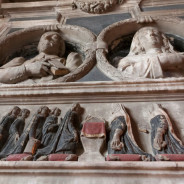
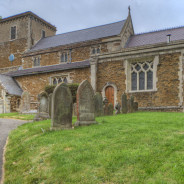
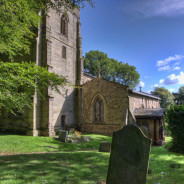
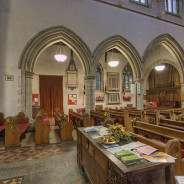
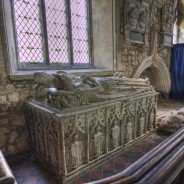
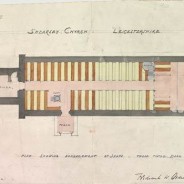
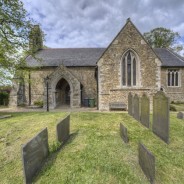
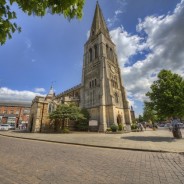
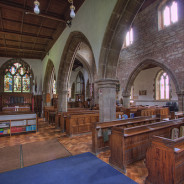
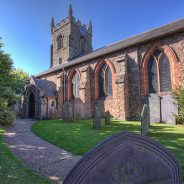


Latest Comments